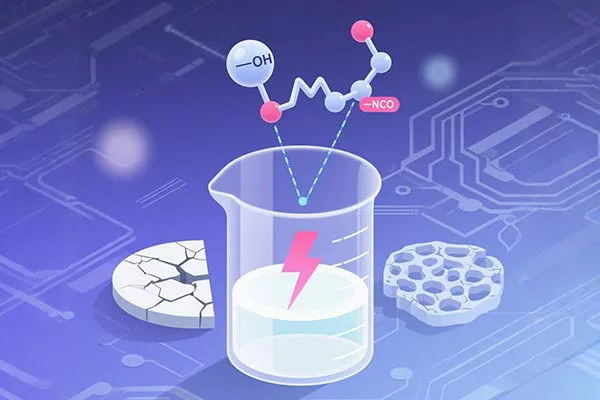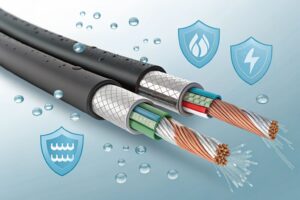Polyurethane shoe soles, known for their cushioning and abrasion-resistant properties, are widely used in the footwear industry today. However, PU materials—especially polyester-based PU—are prone to hydrolytic degradation, particularly in humid climates or after long-term storage. This can lead to issues such as stickiness, foaming, or crumbling of the soles.
Carbodiimide-based hydrolysis stabilizers are additives that can significantly improve product durability and resistance to environmental degradation.
1. Why PU Shoe Sole Systems Need Hydrolysis Protection
PU soles are typically made by combining MDI or TDI isocyanates with polyether or polyester polyols. While polyester-based PU offers excellent mechanical properties, it is vulnerable to hydrolysis due to the presence of ester bonds.
- Hydrolysis breaks ester bonds in the polymer structure.
- The reaction generates carboxylic acids, weakening the polymer backbone.
- Over time, the material loses elasticity and begins to crack, foam, or become sticky.
This is especially problematic for products exported to humid, tropical regions or those requiring extended shelf life.
2. Carbodiimide Hydrolysis Stabilizers: How They Work
The -N=C=N functional groups in carbodiimide compounds are highly reactive and offer a targeted neutralization mechanism against the carboxylic acids formed during hydrolysis.
They chemically bind to carboxylic acids, preventing further chain degradation.
The typical reaction is:
R-N=C=N-R' + R''-COOH → R-NH-C(=NR')-O-COR''
By forming a stable urea derivative, the autocatalytic degradation loop is stopped. As a result, PU materials maintain their durability and mechanical performance over time.
3. Shoe Sole Application: Product Benefits and Forms
Available forms:
Carbodiimide stabilizers come in different forms to suit various production requirements:
- Monomeric carbodiimide: Fast-acting, ideal for short-term protection
- Polymeric carbodiimide: Heat-resistant, offers long-term stability
- Masterbatch type: Pre-dispersed in polyester or TPU carriers for easy handling and consistent dosing
Application:
- Added to the polyol component or B-side system in the PU formulation
- Recommended dosage is typically 0.3% to 1.0%, depending on performance needs
- Can be used in combination with antioxidants or UV stabilizers to further enhance durability
4. Performance Verification of Shoe Sole Systems
In a simulated case study, the following results were observed when HyMax was added to a PU shoe sole formulation:
| Test Condition | Without Stabilizer | With HyMax |
|---|---|---|
| Accelerated Aging at 85°C / 85% RH, 15 Days | Foaming and stickiness | Surface intact, no visible change |
| Tensile Strength Retention | 58% | 81% |
| Flexing Resistance After Aging | 3,000 cycles | More than 8,000 cycles |
Note: The values shown are for reference only and should be validated through testing of specific formulations.
These results demonstrate significant improvements in hydrolysis resistance and retention of mechanical properties under harsh conditions.
5. Environmental Compliance and Market Trends
As environmental regulations tighten, manufacturers are increasingly seeking high-performance additives that are also environmentally friendly. Carbodiimide stabilizers offer several advantages:
- Non-toxic and tin-free
- Thermally stable with minimal volatility
- Fully compatible with PU systems, with no negative impact on foaming or molding processes
This makes them suitable for both mass-market footwear and premium export products that demand extended service life.
6. Conclusion
Carbodiimide-based hydrolysis stabilizers provide a proven, sustainable solution for enhancing the durability of PU soles. Whether your goal is longer product life, fewer returns, or improved export quality, these additives offer a reliable way to upgrade your formulation.
Contact us for samples, technical guidance, and formulation support.
Email: [email protected]







